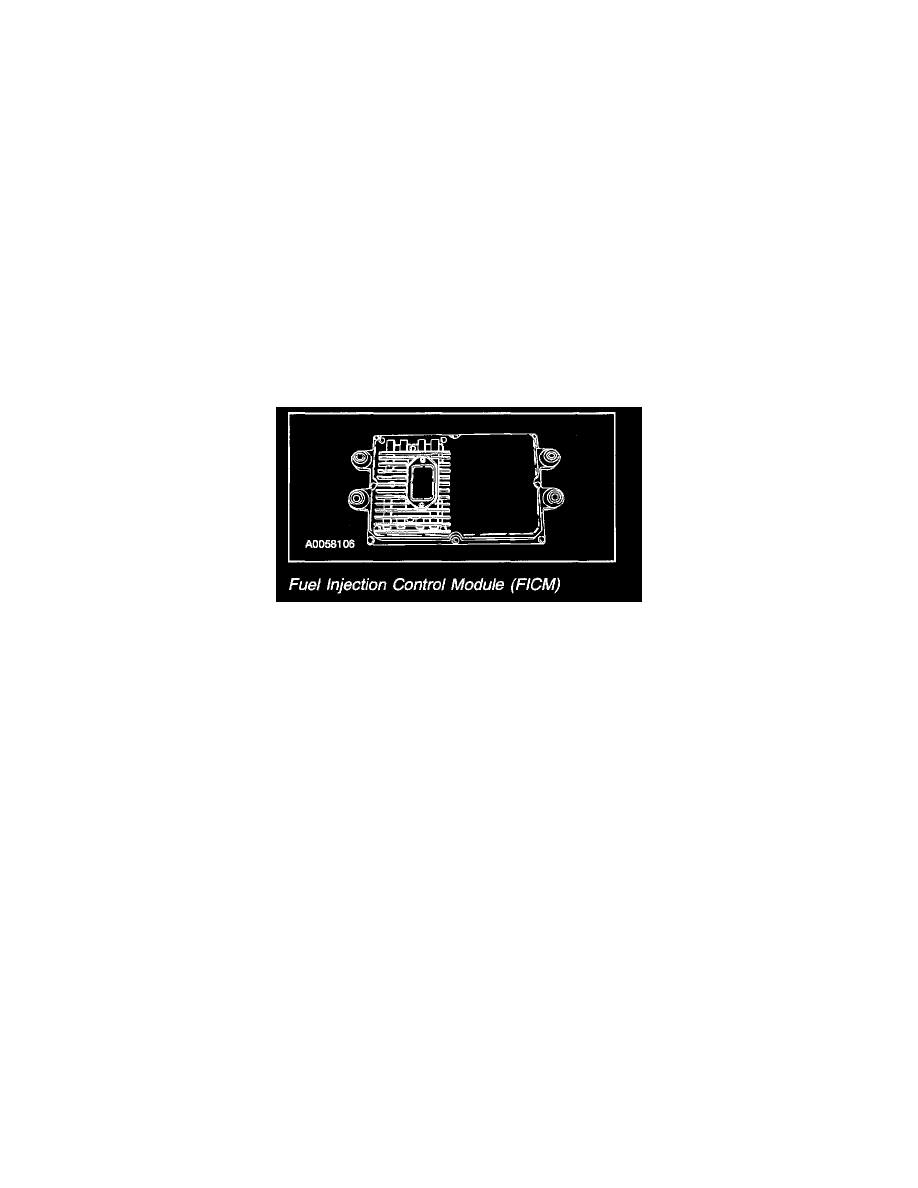F 550 4WD Super Duty V8-6.0L DSL Turbo VIN P (2003)

Engine Control Module: Description and Operation
Diesel Models
Powertrain Control Module
Powertrain Control Module
The center of the Electronic Control (EC) system is a microprocessor called the Powertrain Control Module (PCM). The PCM has a Transmission
Control Module (TCM) internal to the PCM for automatic transmission equipped vehicles. The PCM has three electrical connectors (122 pins). The
PCM receives input from sensors and other electronic components (switches, relays, etc.) and places this information is RAM or Keep Alive RAM.
Based on information programmed into its memory (ROM), the PCM generates output signals to control various relays, solenoids and actuators. For
vehicles equipped with manual transmissions, only two plugs are used.
The TCM controls the Power Monitor Strategy. The Power Monitor monitors engine speed at idle. If an abnormal engine speed increase is detected,
the Power Monitor will command the Fuel Injection Control Module (FICM) off in an effort to maintain a normal idle speed. For manual transmission
vehicles, the Power Monitor is the only active TCM function. DTCs will be stored if the Power Monitor is active.
Fuel Injection Control Module
Fuel Injection Control Module
Fuel Injection Control Module (FICM)
The Fuel Injection Control Module (FICM) receives information from the PCM, including volume of fuel desired, rpm, engine oil temperature,
injection control pressure and others. The FICM then uses those signals to calculate fuel injection and duration. After calculating injector fuel delivery
time, the FICM sends 48 volts at 20-amp pulse to the correct injector so that the correct amount of fuel is delivered to the cylinder at the correct time.
Diesel PCM Input
Power Monitor
The Diesel Engine Power Monitor (DEPM) strategy resides in the Transmission Control Module located inside of the PCM. The function of the
DEPM is to monitor engine rpm when there is no power demand from the APP sensor.
Under normal engine idle operation, the DEPM value must always be higher than engine rpm. In the event that rpm does increase to its calibrated idle
speed value following completion of deceleration fuel shutoff, due to the injectors not turning off, the DEPM will disable crank and cam output
signals, sent by the PCM to the FICMM. The FICMM input line informs the DEPM when the injectors are turned on and when the injectors are turned
off. When the FICMM line is either shorted or open, the monitor strategy assumes that the fuel injectors are always turned on and sets a DTC.
